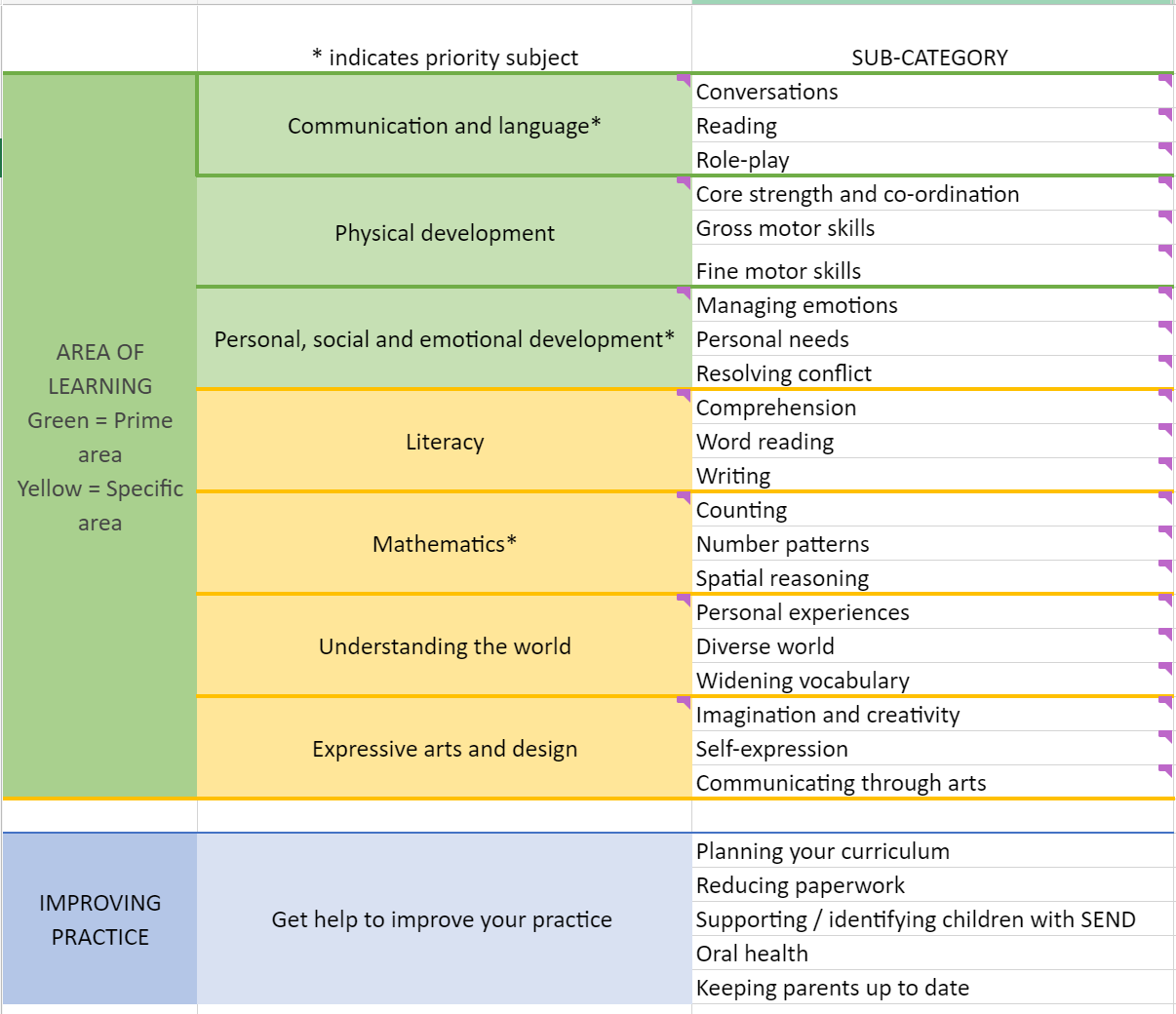During sprint 4, we took a step back to understand the learning mental models of our users, specifically around:
- understanding of the content
- concerns around the changes
- how they might plan using the new area
- if anything needed to be added or changed
# Design artefacts
# 7 areas of learning and their sub-topics

# Hypothesis to validate
-
We believe that practitioners need help identifying areas they need additional support in
-
We believe that [some] practitioners will need additional support to enable them to implement changes
# User need
- I need training on the reforms for me and my team, so that I can check my knowledge and make sure we are all doing the right thing
# User insights
From a practitioner viewpoint, there are very few changes to the 7 areas, with no significant changes to Communication & Language, PSED and Expressive Arts & Design.
They don’t envisage changing the way they plan and implement activities for most areas. If they are expected to change practice, official guidance needs to clearly demonstrate the changes, with examples of practice.
-
We should be mindful to provide example activities for the full range of age groups covered by the EYFS. Failure to do so will imply the area is not relevant for all ages
-
Practitioners rely on Development Matters to baseline, observe and plan next steps for children
-
Practitioners are familiar and comfortable with identifying training needs (disproved our hypothesis that our users need help identifying areas they need additional support)